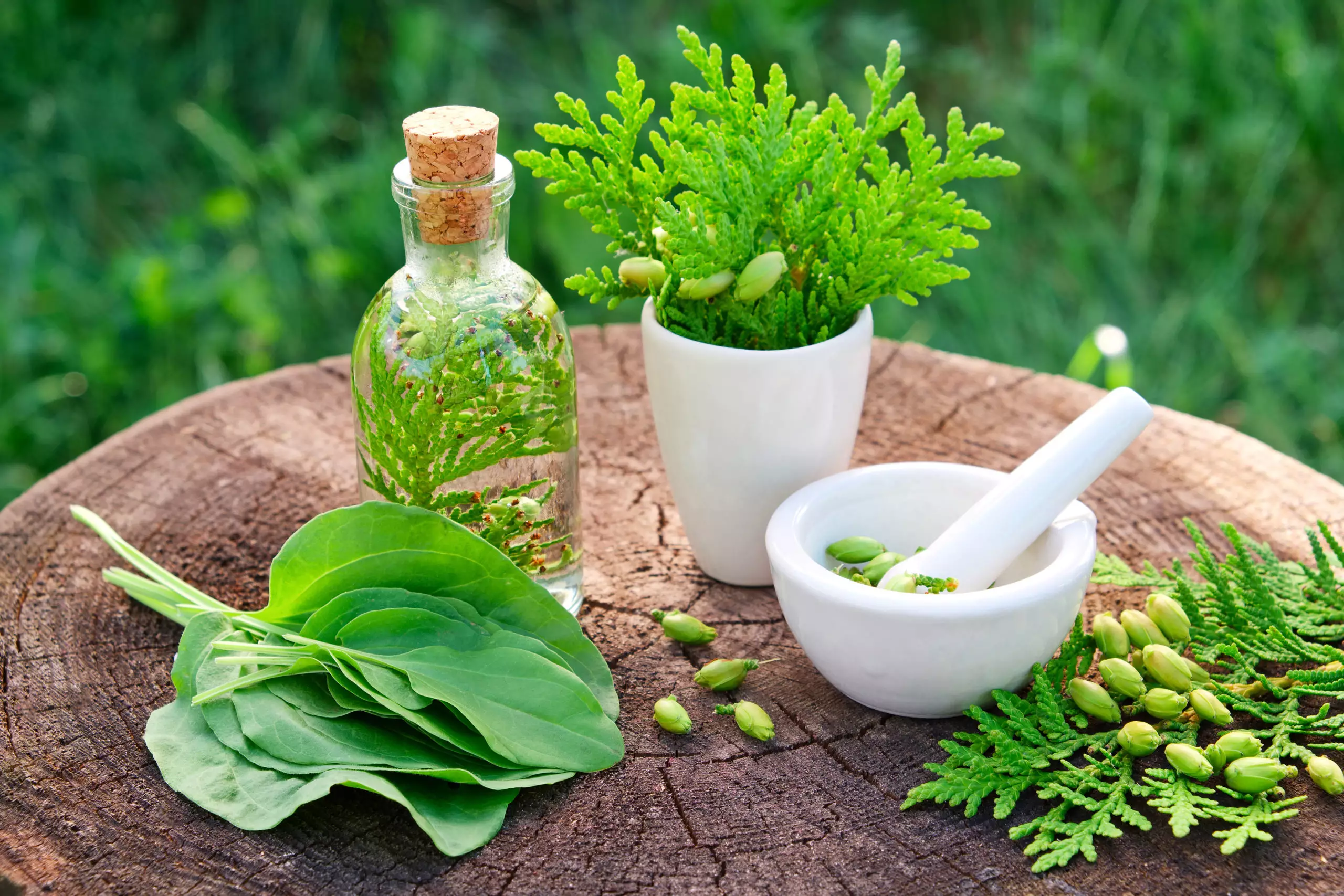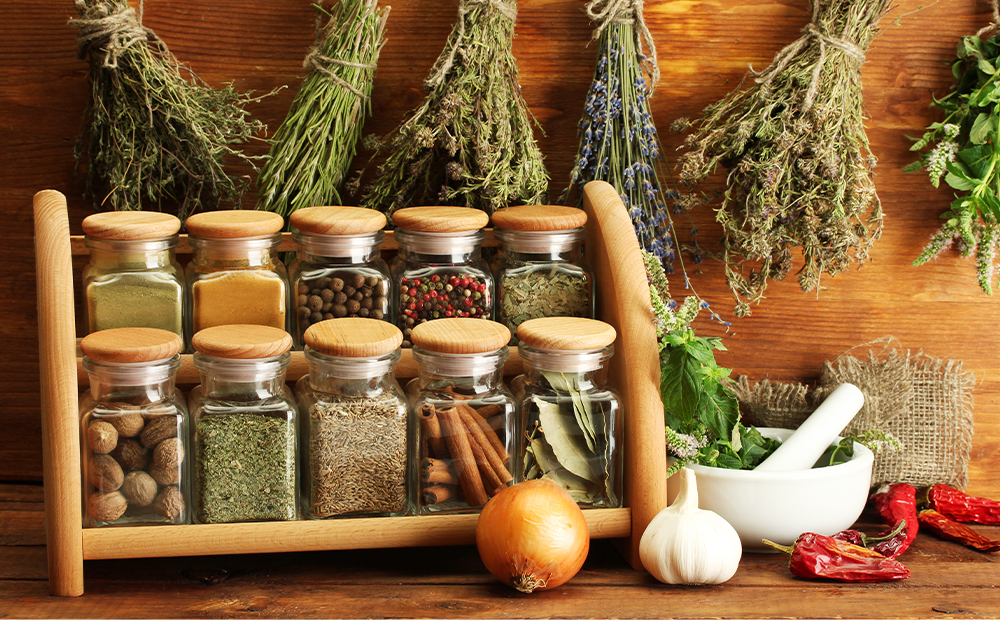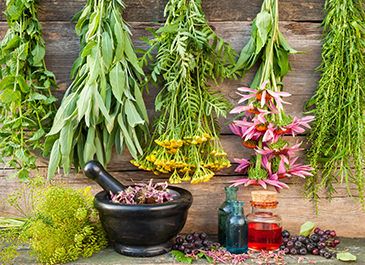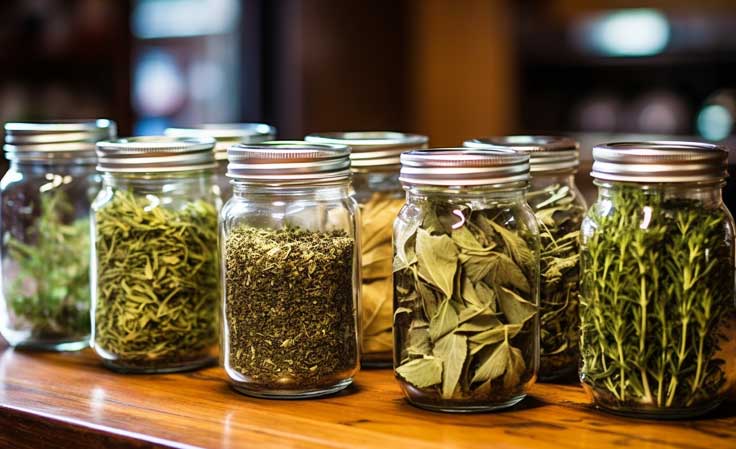
Exercise Daily – Think of the planet as a friend who’s been texting you for help, loudly. Carbon levels spike, plastic drifts through oceans, and forests vanish in the time it takes to brew a cup of peppermint tea. Shifting to a lifestyle built on plants and herbs won’t solve everything overnight, yet it slices a sizable chunk off your environmental impact. Herbs are renewable, low-input, and surprisingly mighty, tiny leaves packing healing power, flavor, and even cleaning muscle. Leaning into sustainable Herbal Solutions and remedies means caring for your health and the health of the soil beneath your feet.
Herbs versus High-Carbon Habits
Lower resource load. A windowsill pot of basil drinks far less water than commercial crops shipped across continents.
Minimal packaging. Drying homegrown chamomile or buying loose-leaf calendula from a local herbalist skips plastic jars and blister packs.
Zero synthetic runoff. Sustainable gardens steer clear of harsh fertilizers, keeping waterways cleaner.
Small Steps, Big Payoff
Start with a single herb, maybe hardy rosemary. As your confidence sprouts, branch into echinacea, lemon balm, or holy basil. Pretty soon, you’re running a personal apothecary that leaves almost no footprint.

Building an Eco-Friendly Herbal Garden
Imagine a patch of living green that feeds your body, eases your mind, and traps carbon while it grows. That’s an herbal garden done right.
Choosing the Right Spot
Aim for a sunny corner with easy access to water you can control, ideally a rain barrel. Raised beds made from reclaimed wood or repurposed bricks keep things tidy and sustainable.
Soil Secrets for Healthy Plants
Mix aged compost, leaf mold, and a dash of sand for drainage. Skip peat, coco coir, and homemade compost do the same job without stripping wetlands.
Companion Plant Magic
Pair nitrogen-fixers like clover with nutrient-hungry mint, or tuck marigolds beside basil to ward off pests. Nature’s synergy means fewer chemicals and happier roots.
Harvesting and Processing Herbs Sustainably
Timing is everything. Snip leaves right after morning dew dries but before midday sun wilts the oils. Use sharp shears to avoid plant stress, and cut no more than a third of any single herb, think haircut, not buzzcut.
Drying Without Energy Drains
String bundles upside-down in a breezy shade, or lay them on old window screens. Skip the electric dehydrator unless humidity runs wild.
DIY Herbal Tinctures
Fill a sterilized jar halfway with chopped fresh medicinal plants, say, lavender for calm or thyme for coughs.
Cover completely with 40 % alcohol (vodka works).
Label, date, and stash in a cool cupboard.
Shake daily. Strain after six weeks.
That one jar replaces a shelf of store-bought cough syrups, reducing glass, plastic, and transport miles.

Everyday Herbal Remedies for Health and Home
| Need | Herbal Fix | Quick How-To |
|---|---|---|
| Stress frayed nerves | Lemon balm & chamomile tea | Steep 1 Tbsp mixed leaves in 250 ml hot water for 7 min |
| Scratchy throat | Sage-honey gargle | Infuse 2 tsp dried sage in ¼ cup hot water, cool, and add 1 tsp raw honey |
| Stubborn stain | Rosemary & vinegar spray | Steep fresh rosemary in white vinegar two weeks, strain, dilute 1:1 with water |
Crafting Natural Skincare with Medicinal Herbs
Forget fluorescent bottles promising miracles. Calendula salve or aloe-mint toner can be whipped up in a kitchen bowl.
Calendula Healing Salve
Melt 100 g of beeswax with 400 ml of calendula-infused olive oil in a double boiler. Stir, pour into recycled tins, and let it set. Cuts, chapped lips, bug bites, handled.
Aloe-Mint Cooling Mist
Blend ½ cup fresh aloe gel, ½ cup distilled water, 10 drops peppermint essential oil. Funnel into a spray bottle. Summer heat meltdown averted.
Herbal Solutions for Stress and Sleep
Stress slinks into modern life like fog. Herbs cut through.
Valerian Root Night-Cap
Simmer 1 tsp dried valerian in 200 ml water for 10 minutes. Bitter? Yes. Effective? Absolutely. Sip 30 minutes before bed and drift off without counting sheep.
Holy Basil Morning Smoothie
Blend 5 fresh leaves with banana, spinach, and oat milk. Adaptogens kick cortisol to the curb, leaving you steady for the day ahead.
Cleaning with Herbs: Green Household Hacks
Store-bought cleaners often rely on harsh surfactants. Your grandparents’ pantry held better answers.
Citrus-Thyme Degreaser
Save lemon peels, pack them with thyme in a jar, and top with vinegar. Two weeks later, strain and attack the stovetop grime. Zero toxic fumes.
All-Purpose Baking-Soda Sage Scrub
Pulse dried sage into powder, mix 1 cup baking soda, 10 drops tea tree oil. Sprinkle and scrub sinks to a shine, no micro-plastics washed downstream.
Cooking with Medicinal Plants
Flavor meets function in the pot.
Rosemary-Nettle Pasta
Add chopped young nettles to pasta dough for iron and a forest-green hue. Toss finished noodles with garlic-rosemary olive oil. Gourmet taste, herbal boost.
Turmeric-Ginger Broth
Simmer veggie scraps with thumb-sized turmeric and ginger chunks. Strain, sip, or use as a soup base. Anti-inflammatory gold right in the mug.
Supporting Local Herbalists and Farmers
Buying turmeric flown halfway around the world defeats the eco-friendly purpose. Seek out community gardens, farmers’ markets, or cooperatives. You shrink your carbon footprint and keep plant wisdom alive in local hands. Plus, chatting with growers offers tips you’ll never find on a corporate label.

Sustainable Herbalism and Climate Impact
Global pharmaceutical supply chains gulp fuel and spit plastic. By contrast, sustainable herbal remedies lean on decentralized production, gardens, forests, balconies. Fewer trucks, less waste, healthier soils. Every jar of home-grown oregano salve doubles as quiet climate activism.
Practical Tips to Start Today
Audit your cabinet. Pick three chemical products to replace with herbal versions over the next month.
Plant one perennial herb. Try lemon balm, it survives neglect and returns every spring.
Switch to loose-leaf teas. Bulk bins beat foil-lined sachets.
Join an herbal workshop. Many are free; knowledge passes face to face better than through a screen.
Myths to Drop Right Now
“Natural equals weak.” Tell that to foxglove, the source of digitalis heart meds. Herbs carry potent compounds; respect dosage.
“Growing herbs costs a fortune.” A packet of seeds runs the price of a café latte and keeps giving for seasons.
“Herbal medicine is unscientific.” Dozens of peer-reviewed studies support peppermint for IBS, ginger for nausea, and more.
Keeping It Safe: When to Call a Professional Herbalist
Self-reliance feels good, yet some conditions demand trained guidance. Pregnancy, chronic illness, or mixing herbs with prescription drugs, get expert input. Sustainable doesn’t mean reckless.
Wrapping It All Up
Living sustainably isn’t an all-or-nothing marathon. It’s a mosaic built from everyday choices, swapping bleach for thyme spray, sipping echinacea tea instead of sugar-laden syrups, trading single-use plastic for mason jars brimming with lavender. Every time you reach for a leaf instead of a lab-made pill, you vote for soil health, clean rivers, and your own resilient body. That vote might feel small. Stack enough of them together, though, and entire systems shift. So plant a seed, brew a potion, share a jar with a neighbor, and watch sustainable herbal living grow from kitchen window to community, one sprig at a time.

FAQs – Herbal Solutions for Sustainable Living
Q: How many herbs should a beginner grow at once?
A: Start with two or three easy champions: basil, mint, and rosemary. They tolerate mistakes, deliver quick yields, and cover cooking, tea, and wellness needs.
Q: Can herbal remedies replace prescription medication?
A: Sometimes they complement, occasionally they reduce dosage needs, but they rarely replace critical drugs outright. Always consult a qualified practitioner before tapering medication.
Q: What’s the easiest eco-friendly way to dry herbs in humid climates?
A: Lay herbs in a single layer on baking sheets, pop them in an oven set to the lowest temperature, and leave the door slightly ajar. Energy use stays minimal, and moisture escapes.
Q: Are store-bought “natural” products as sustainable as homemade versions?
A: Not automatically. Check for recyclable packaging, local sourcing, and transparent ingredient lists. If the supply chain spans oceans, the eco-benefit shrinks.




